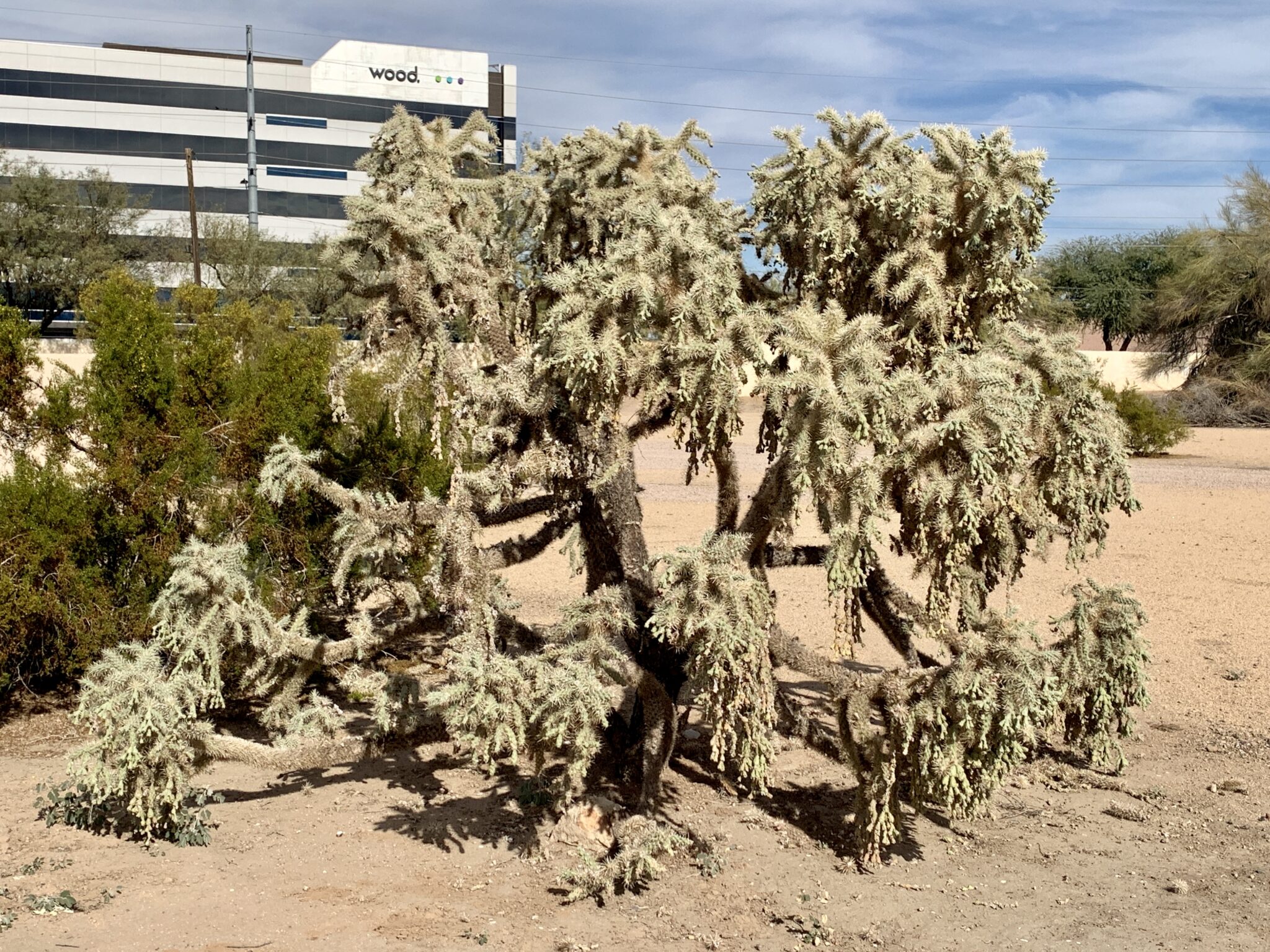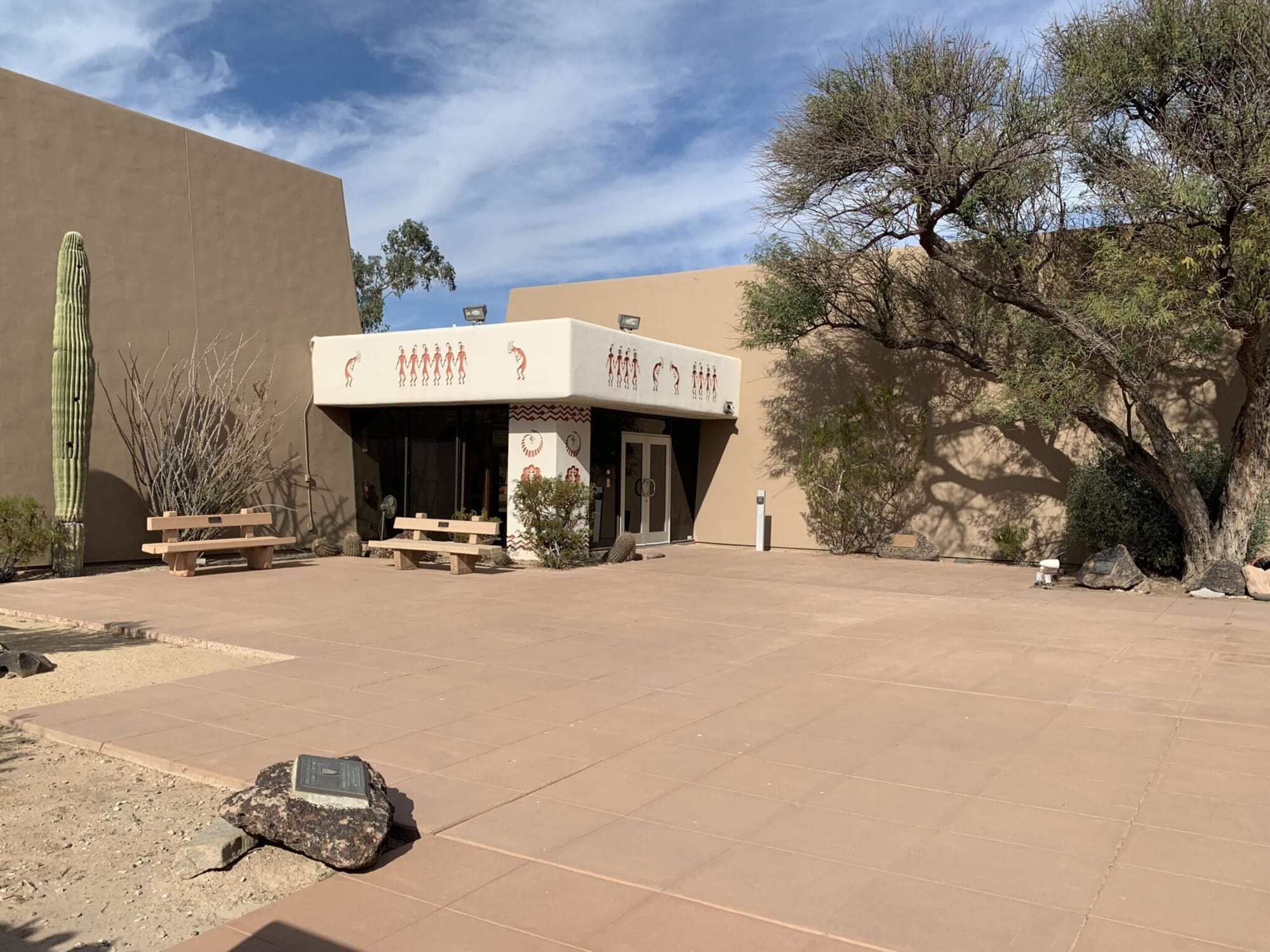
Primitive tools and a lot of time can yield impressive results. To the Egyptian pyramids, the Great Wall of China and the dry stone fences of the United Kingdom and Ireland, add the O’Odham irrigation canals. The O’Odham flourished for 1400 years in a collection of settlements near

Primitive tools and a lot of time can yield impressive results. To the Egyptian pyramids, the Great Wall of China and the dry stone fences of the United Kingdom and Ireland, add the O’Odham irrigation canals.
The O’Odham flourished for 1400 years in a collection of settlements near modern day Phoenix. They lived amongst the hundreds of miles of irrigation canals that they dug.
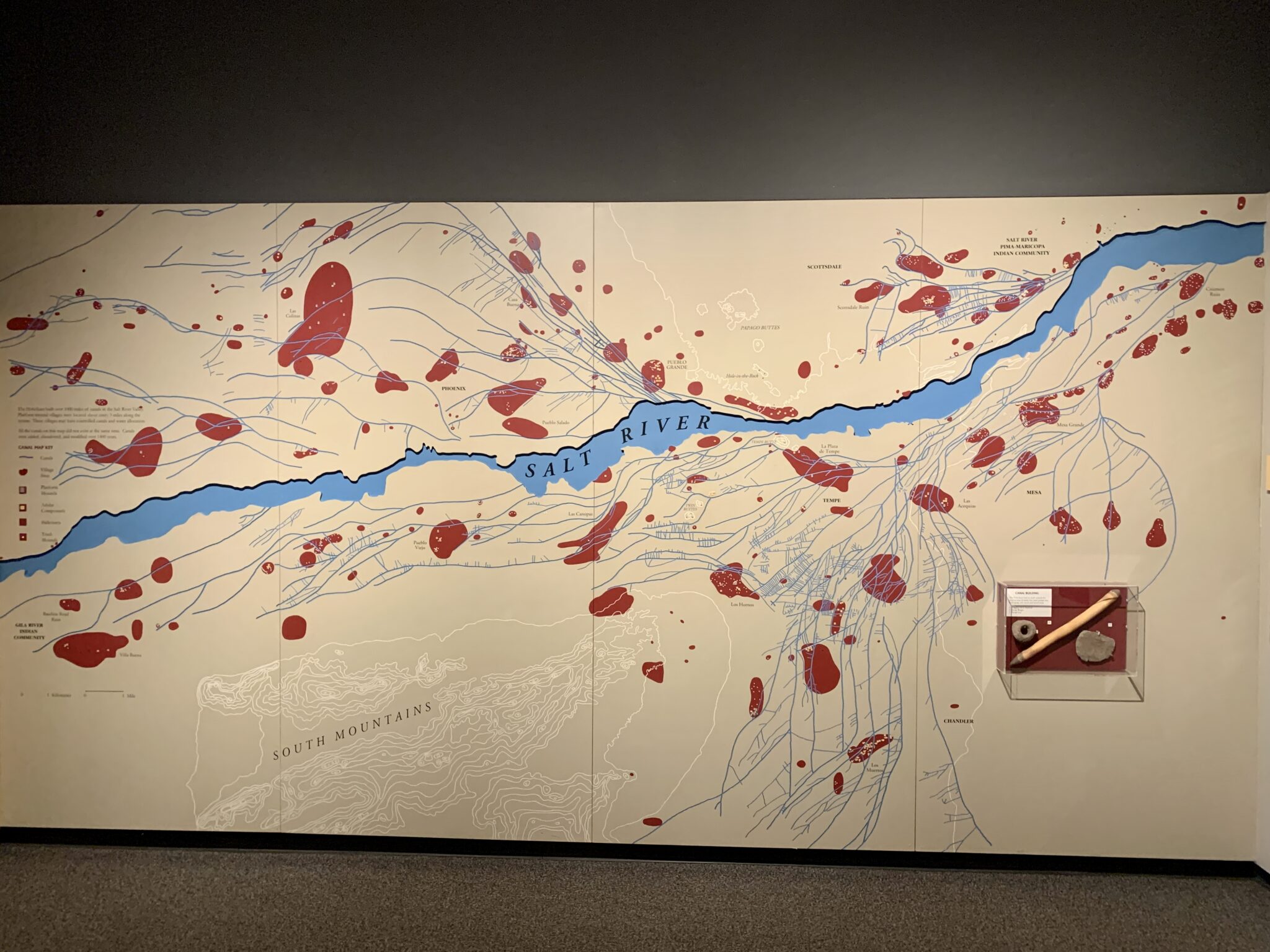
With pointed sticks!
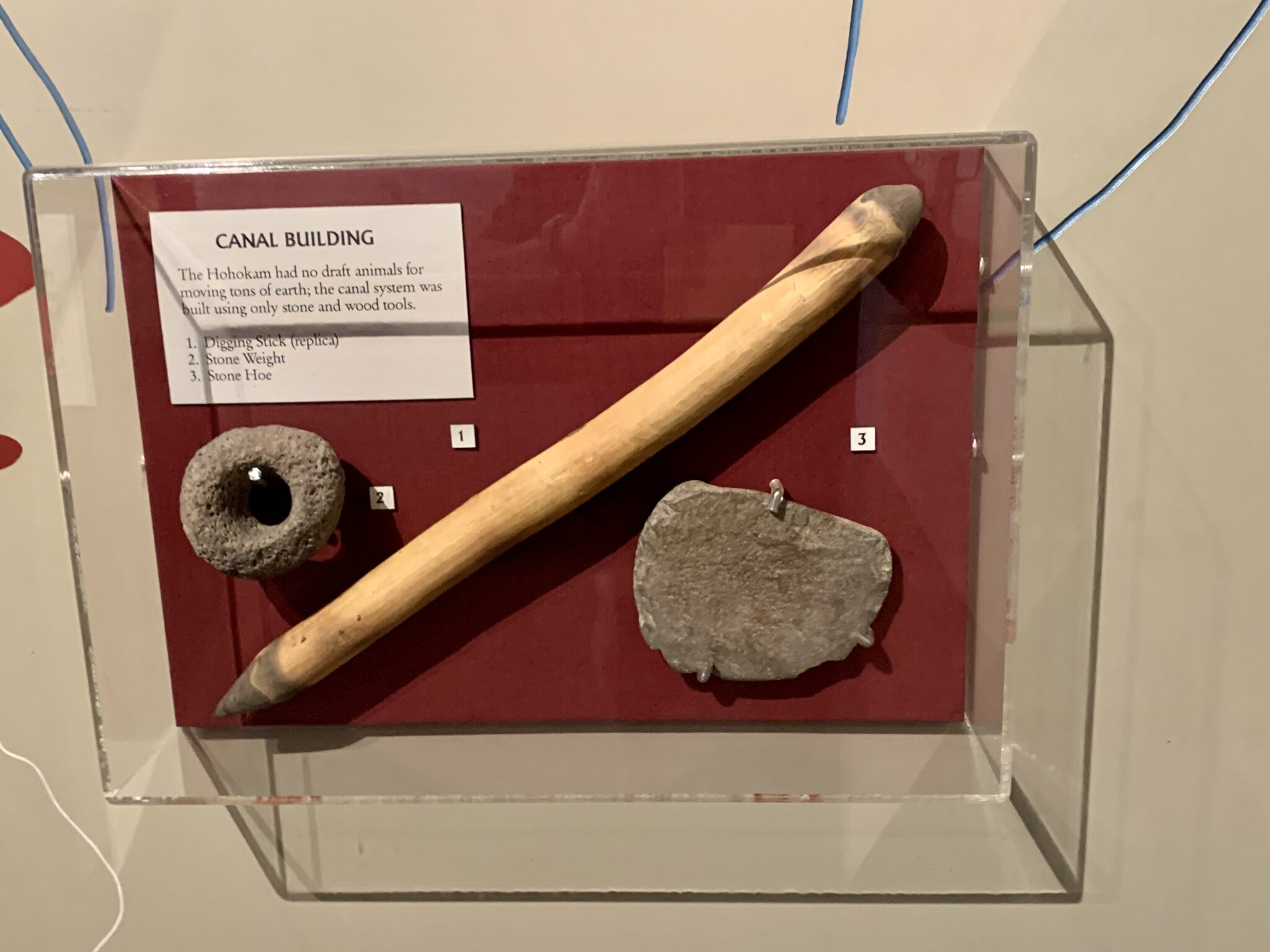
The canal system was no mere collection of shallow ditches washed away by every heavy rain. They were carefully graded and included breakwaters and weirs to channel water from the Salt River and protect against erosion.
The red areas on the map indicate settlements, the blue lines are canals, some as much as 30 feet wide and 10 feet deep. Take a close look at the map. Notice the number of cross-connecting canals. That represents a lot of years and a lot of pointed sticks.
The result of their labors was a highly successful trading economy. The O’Odham were able to grow many different crops and engaged in trade as far away as the Pacific coast, the Sea of Cortez, and points east.
Visiting the site today is a study in contrasts. This ancient settlement is bordered by a freeway and shopping centers. Jets take off and land overhead.
Before we visit the site, let’s have a look inside the small, interesting visitor center. Most of the displays contain modern reproductions of what we believe were O’Odham tools.
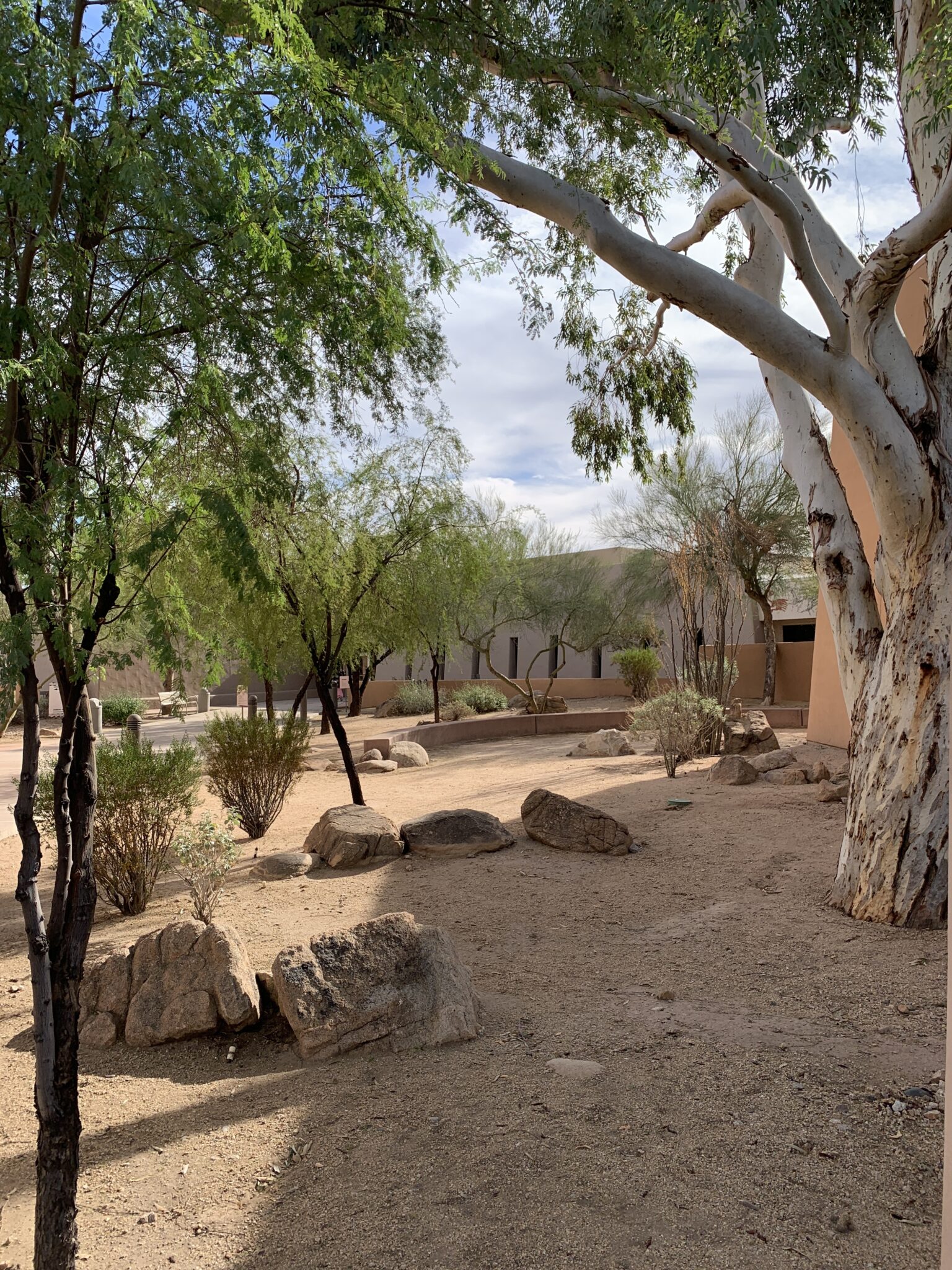
Huh? Why reproductions? How come we don’t know how the O’Odham lived and what their pottery looked like? Because we don’t know a lot about most of the ancient people that once called the southwest home. The Anastasi? Dunno. The builders of Casa Grande? Er… The O’Odham? It’s a lot of speculation. When you build with mud and sticks and leave no written record, there’s not a lot to go on.
Besides the canals, the O’Odham left behind another important artifact: their garbage pits. It’s been said that you can learn a lot about a society by looking at what they throw away.
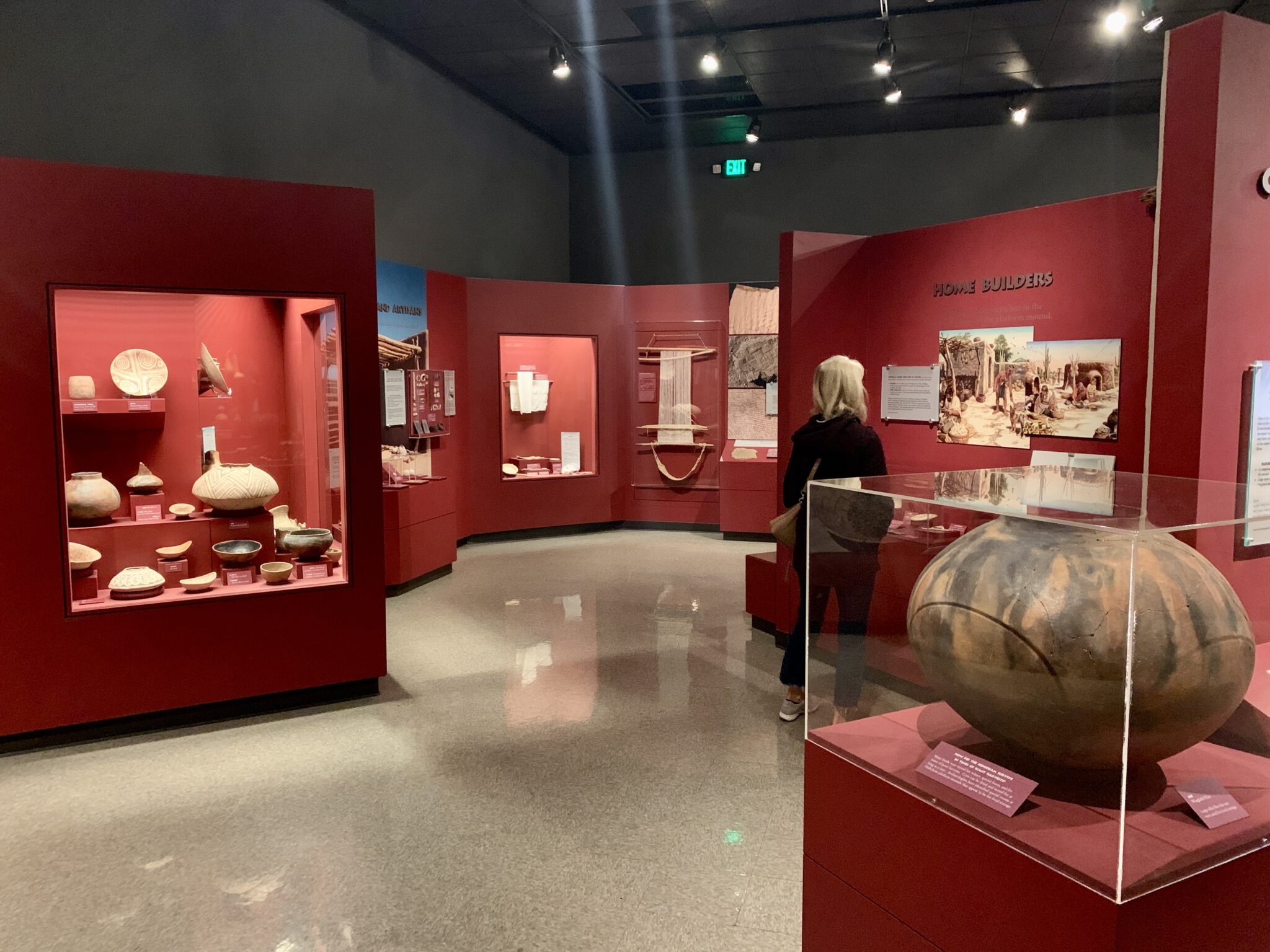
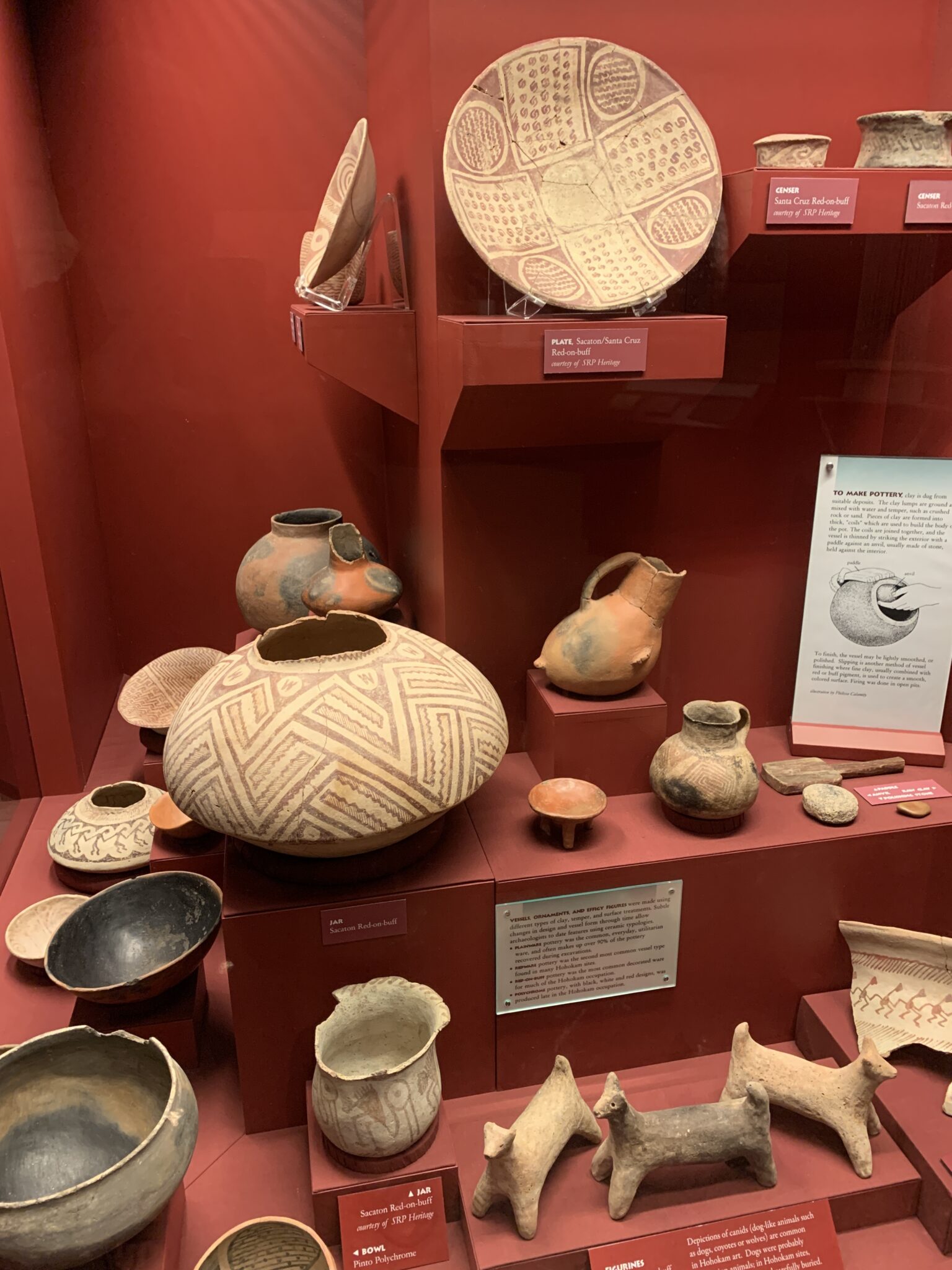
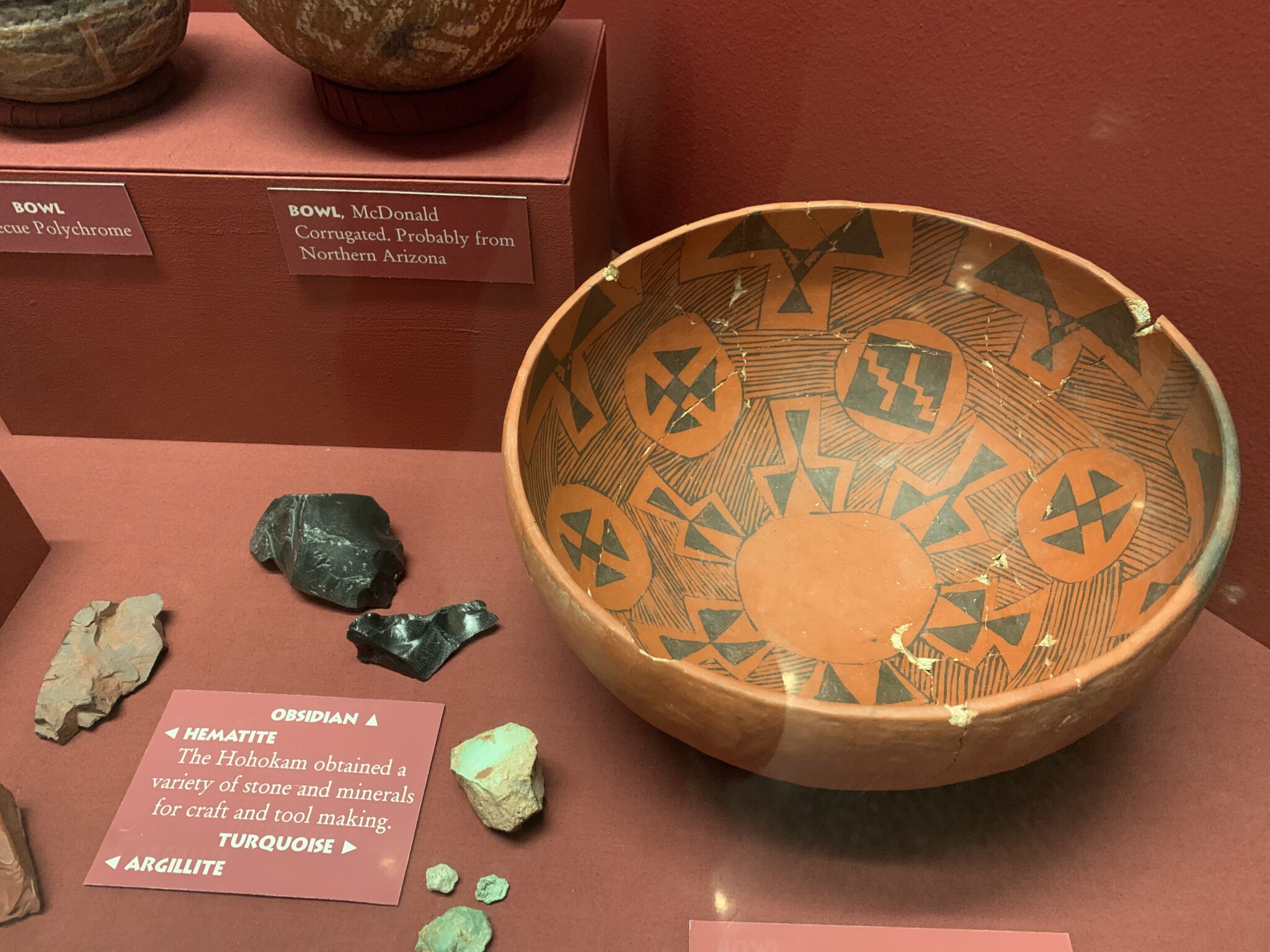
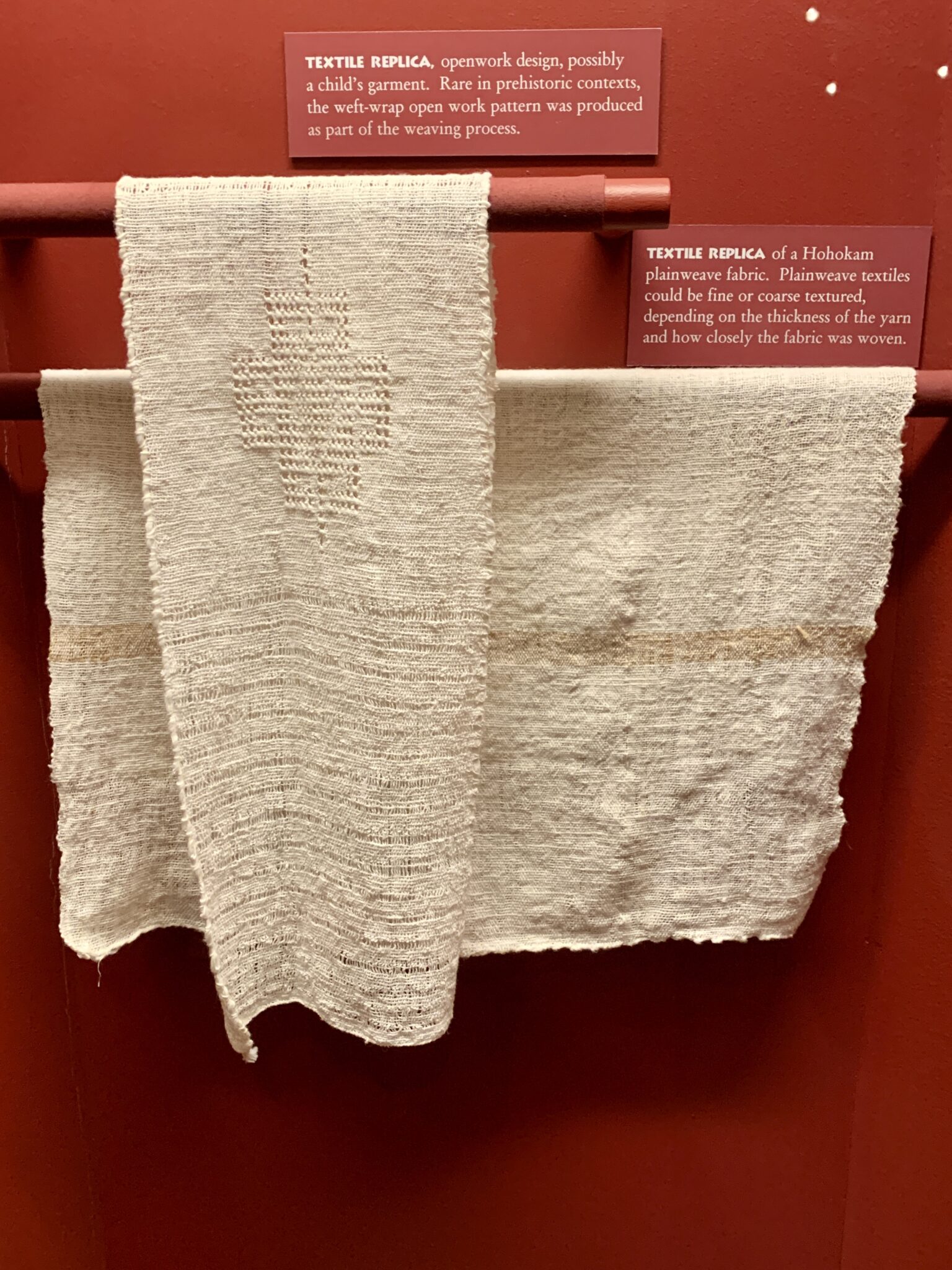
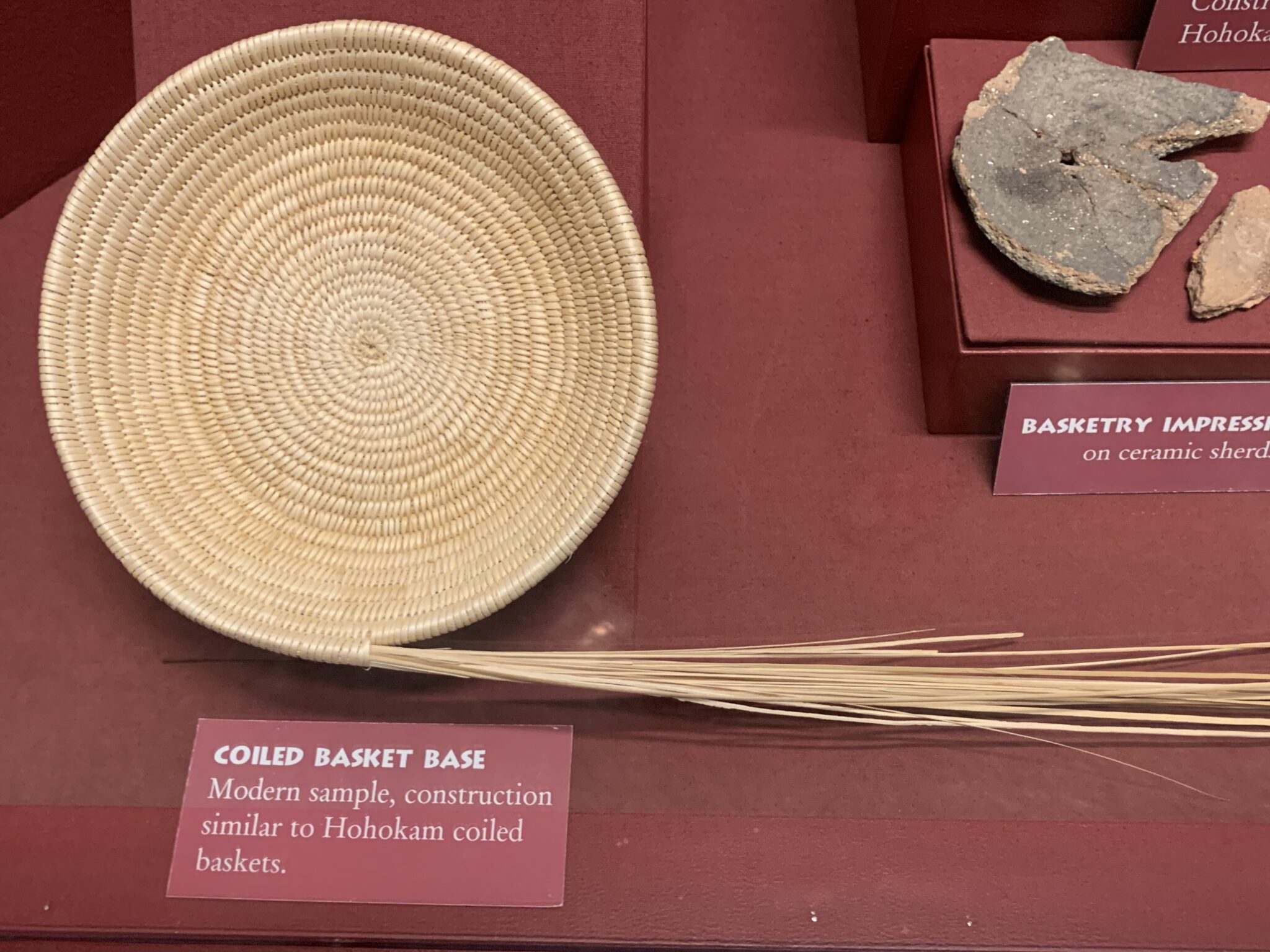

The settlement, one of many, was dominated by a huge platform that grew and shrank in size over the ages. At one point it was at least 30 feet high but erosion is not kind to mud structures. There are remains of houses and other buildings atop the platform. Who, other than Chiefs, lived there and why is subject to speculation.
Here is a corner of the platform wall and the remains of a few buildings that sat on it.
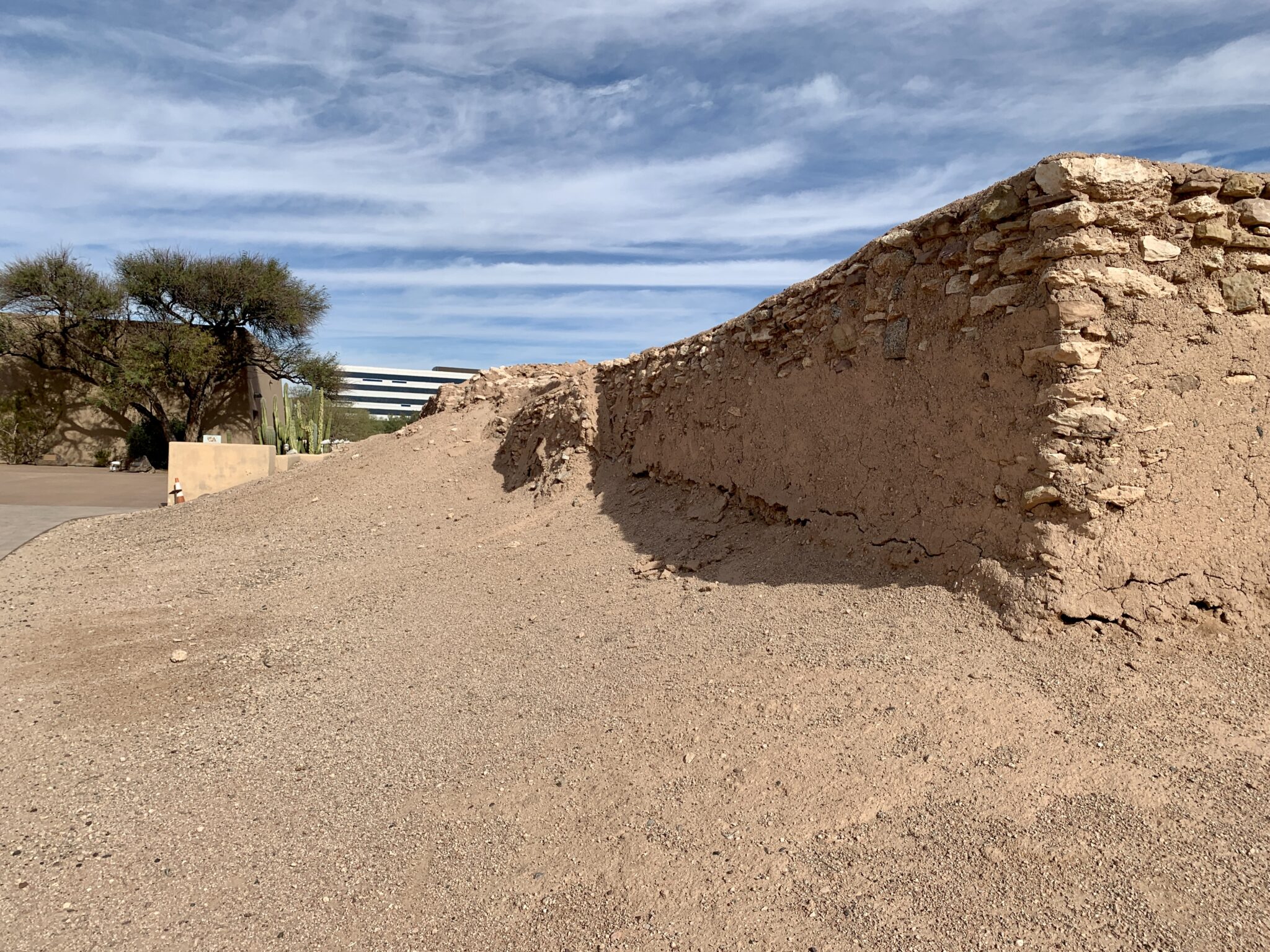
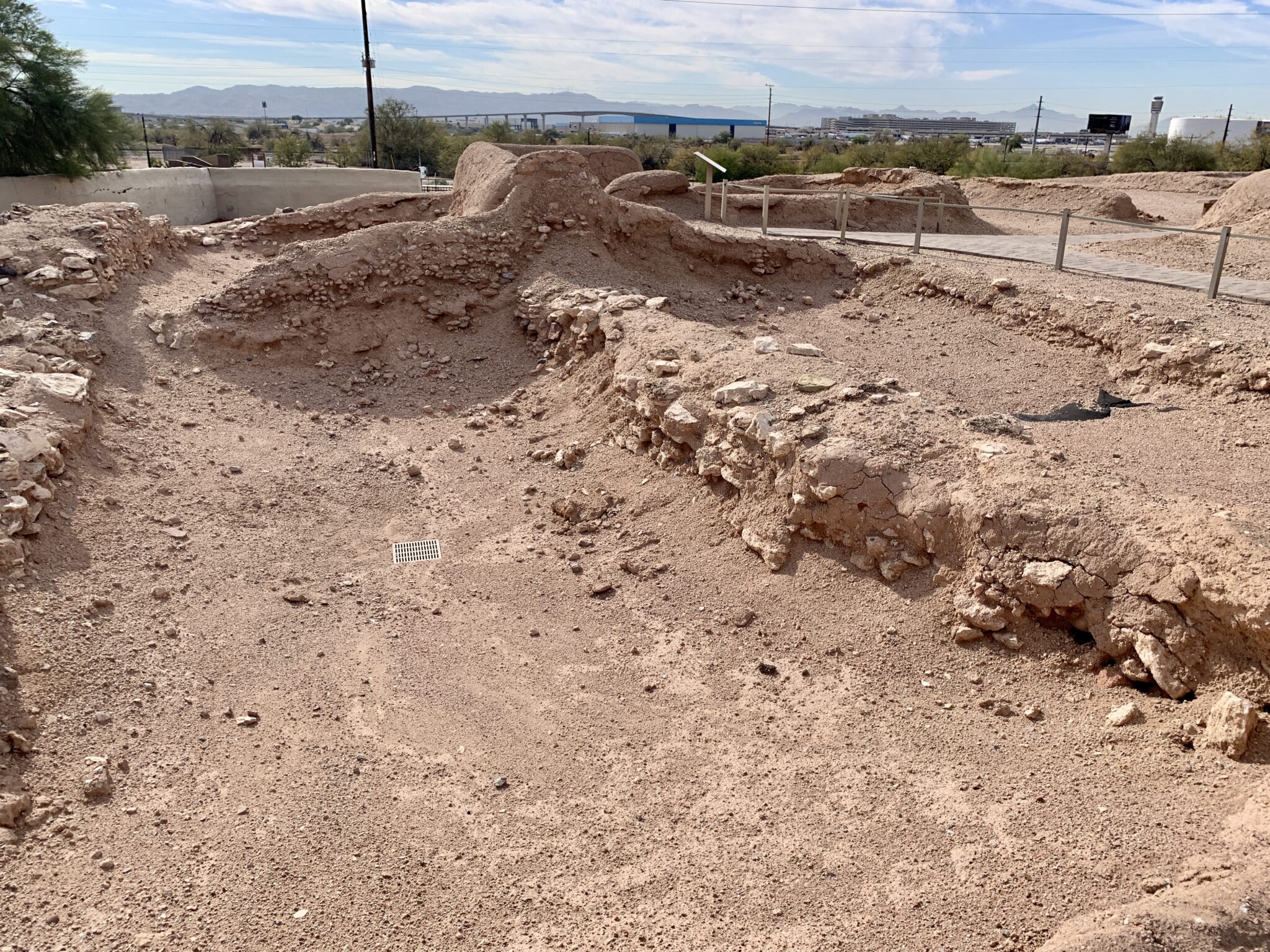
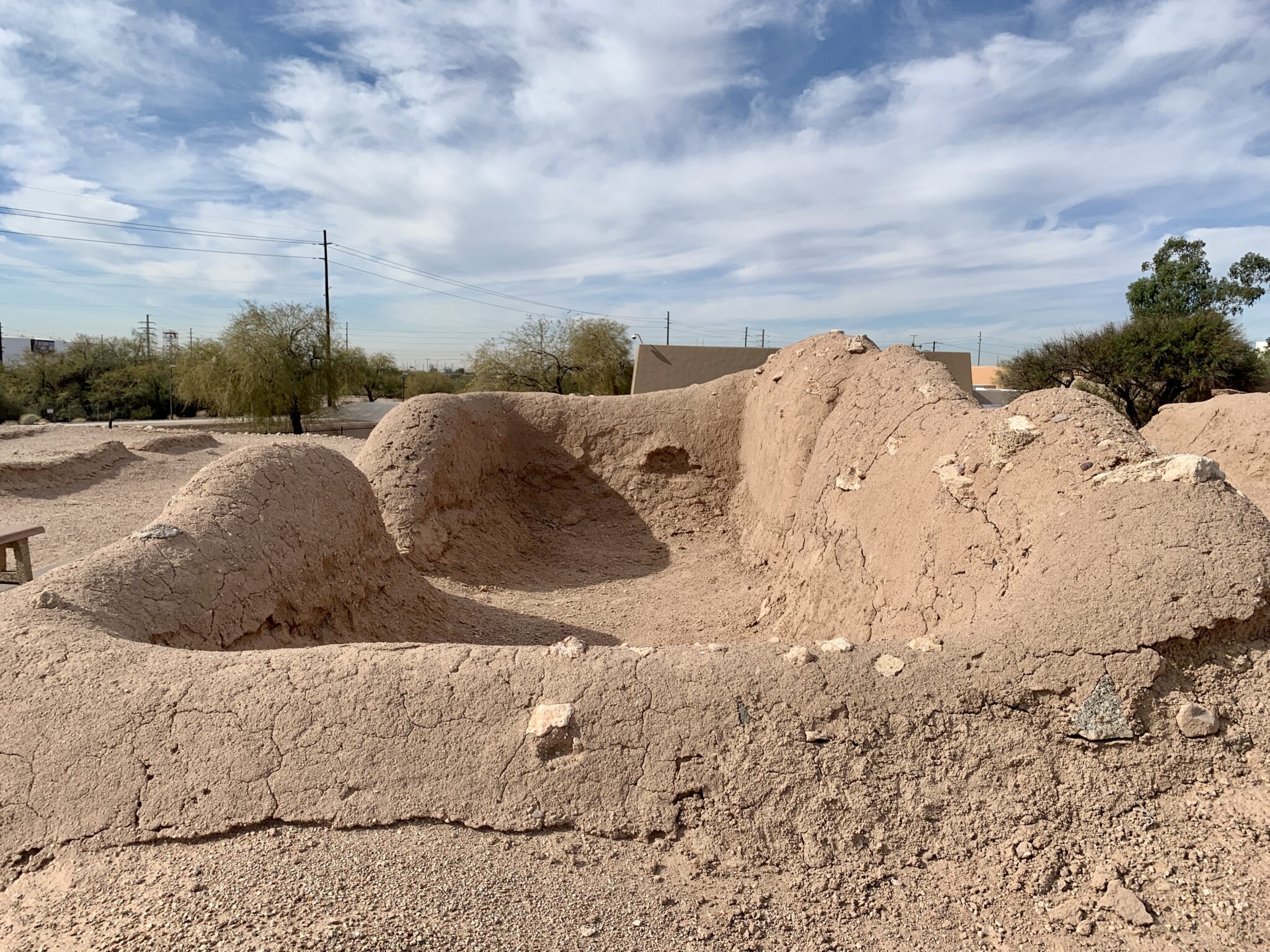

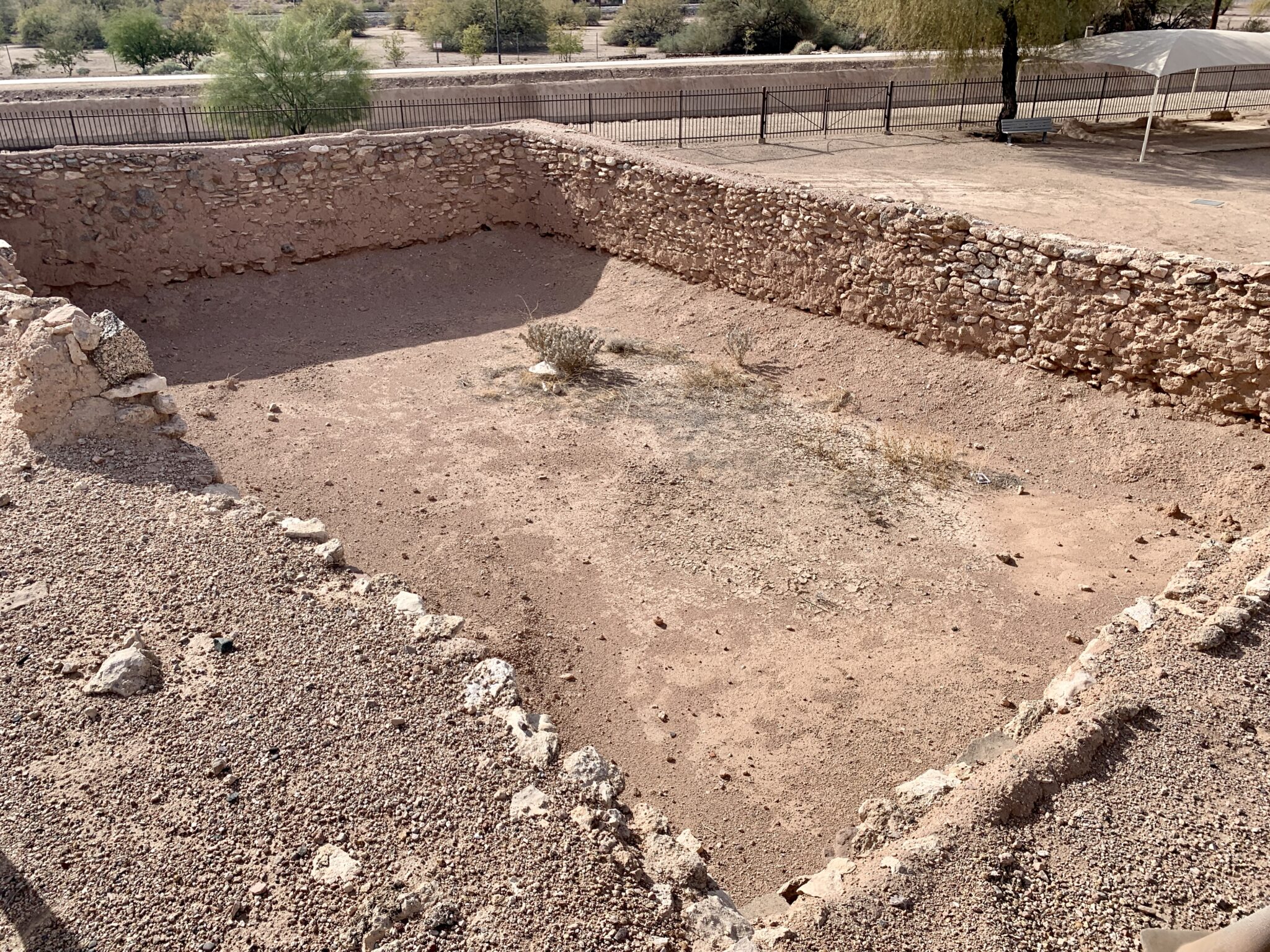
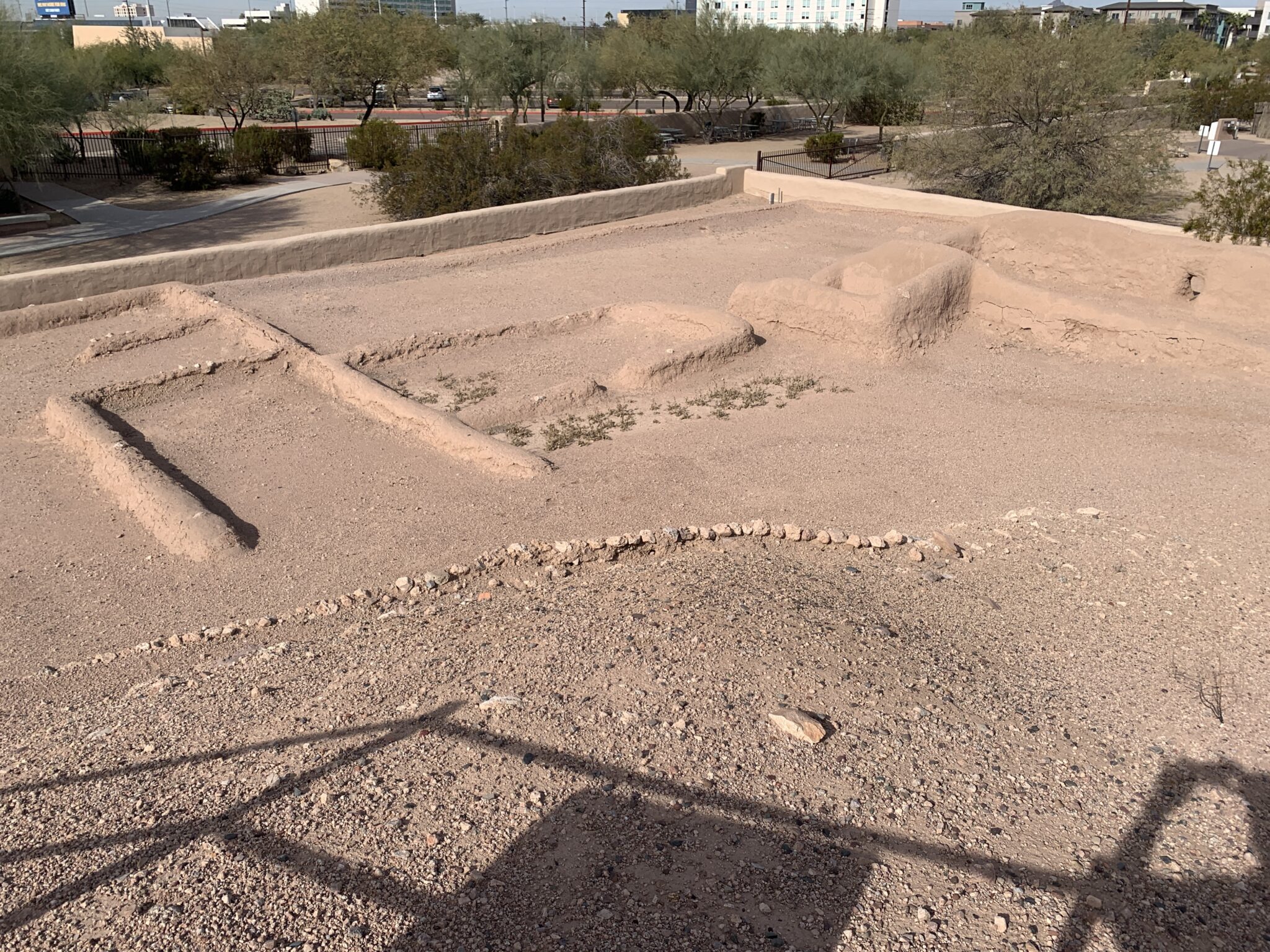
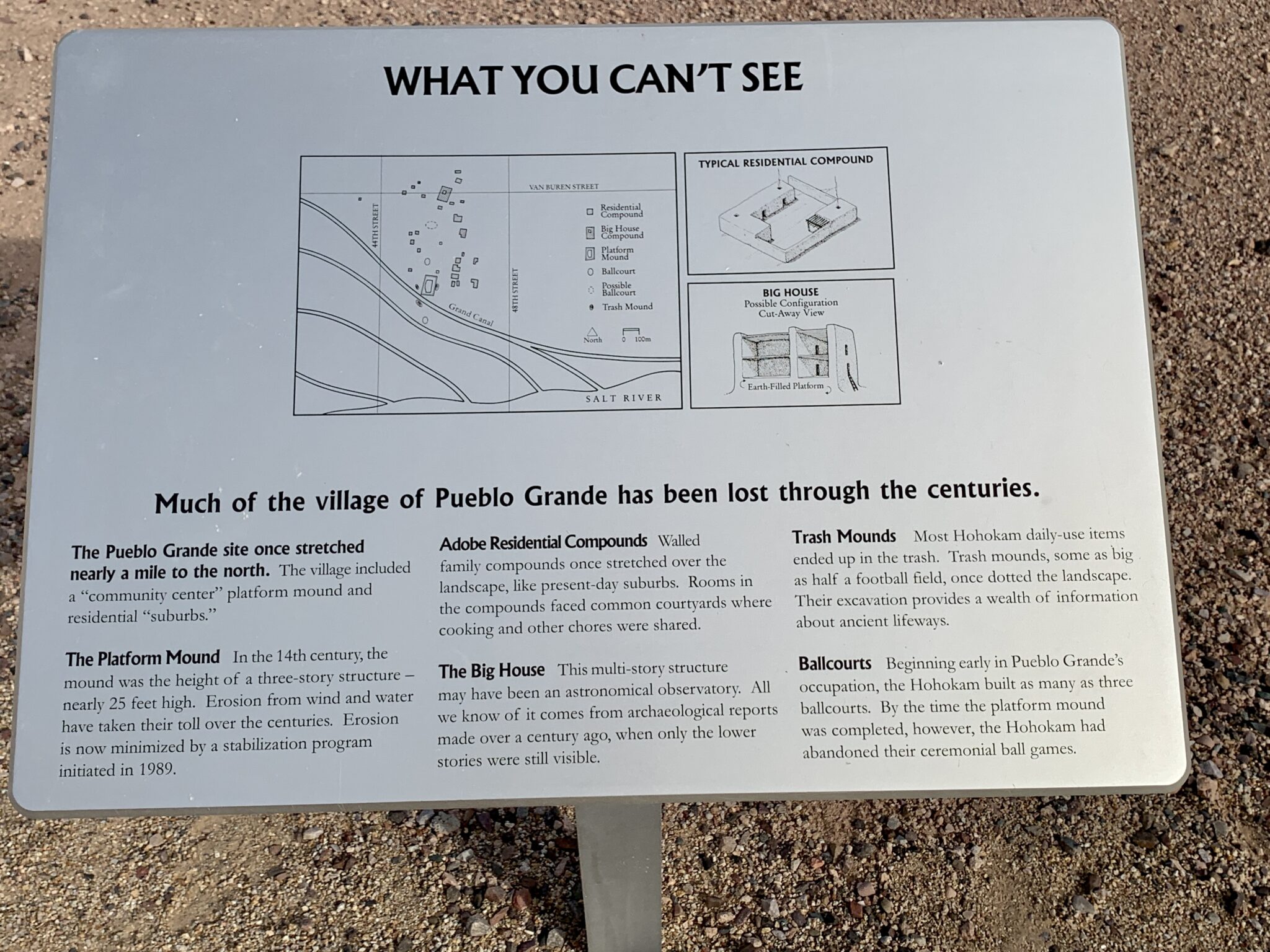
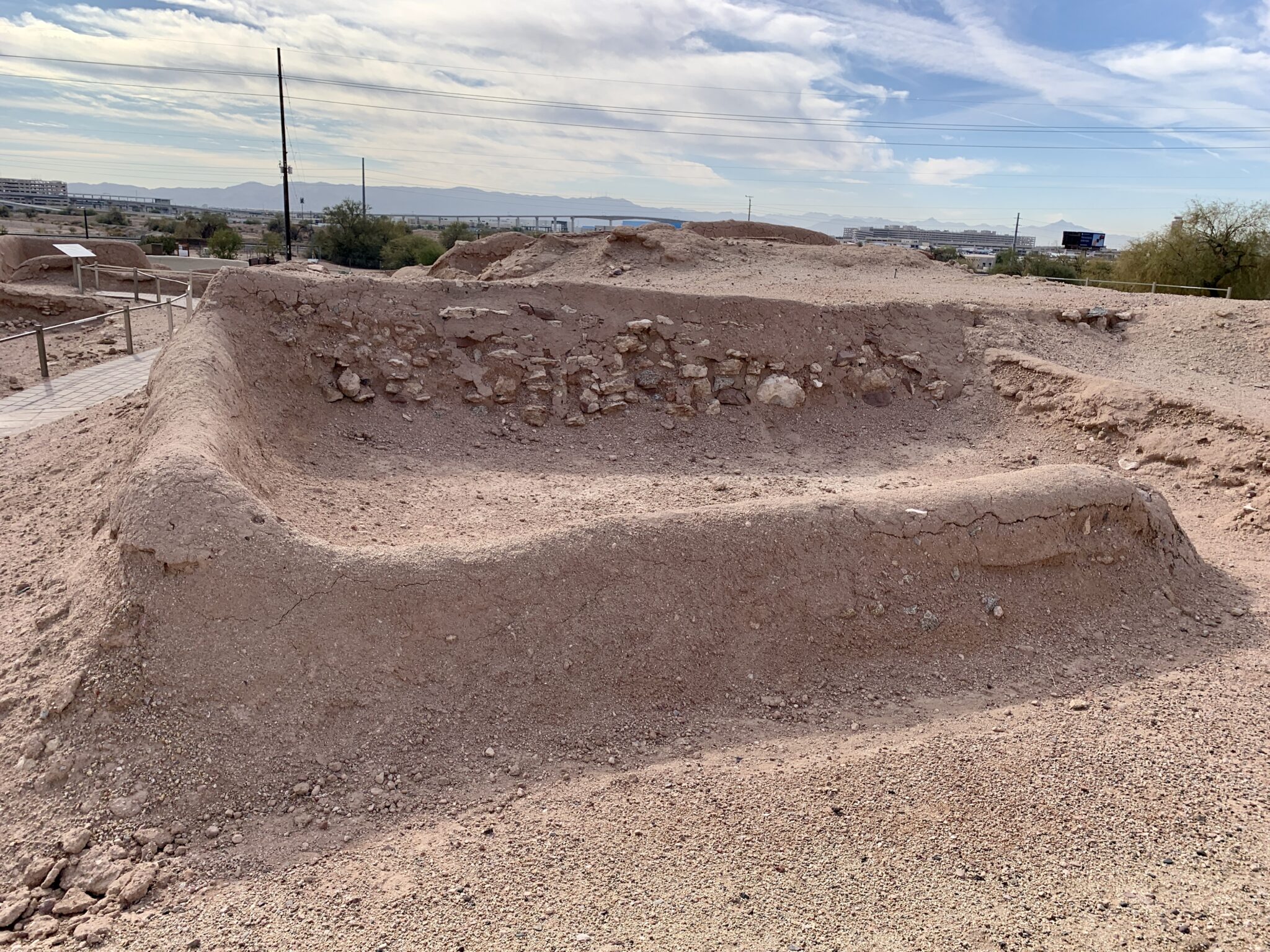
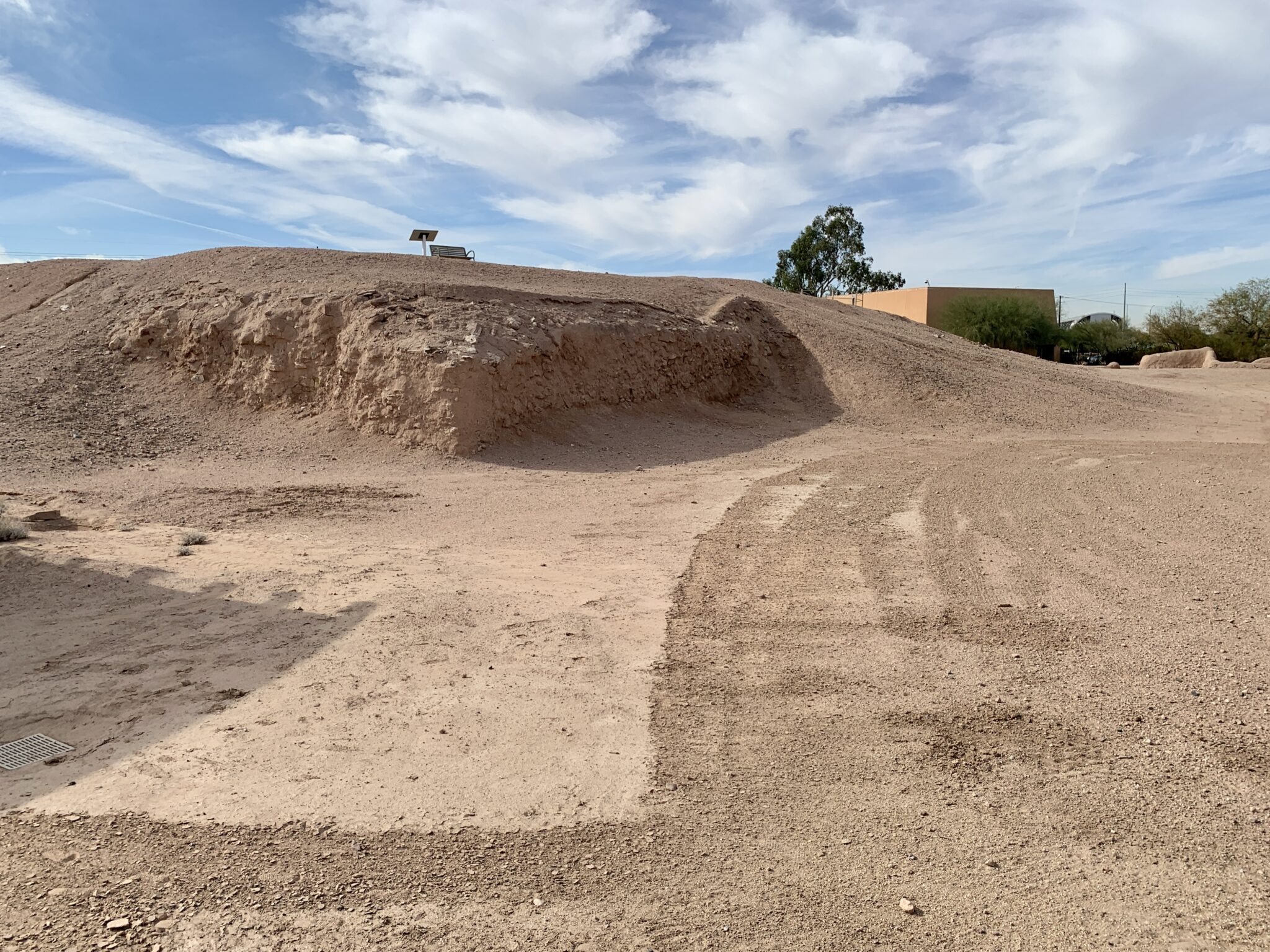
These are replicas of an earlier type of house. They are intentionally taller than the originals were thought to be. The floor was dug below ground level and the roof would have perhaps been more rounded. There was no hole in the roof to vent a fire.
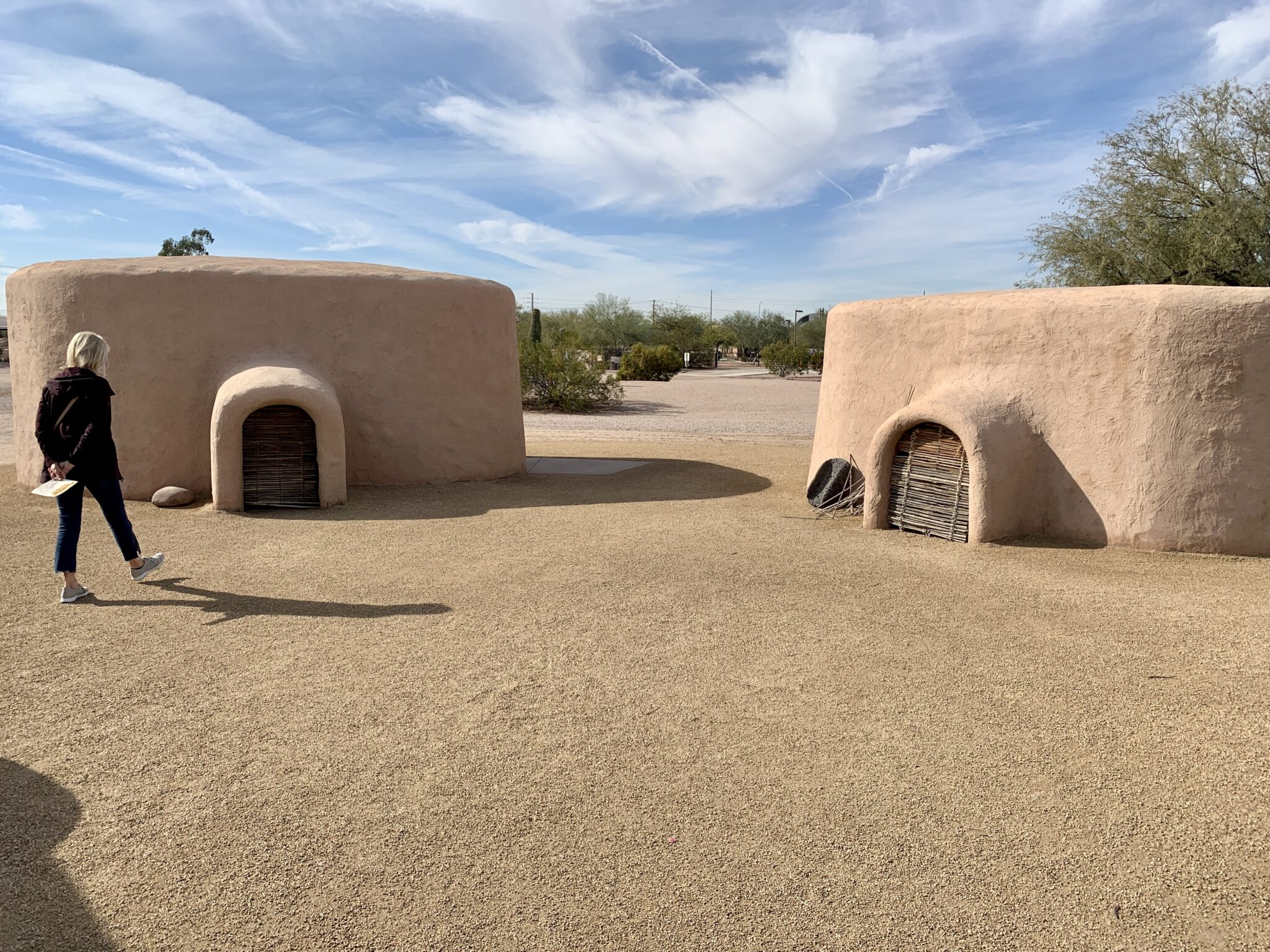
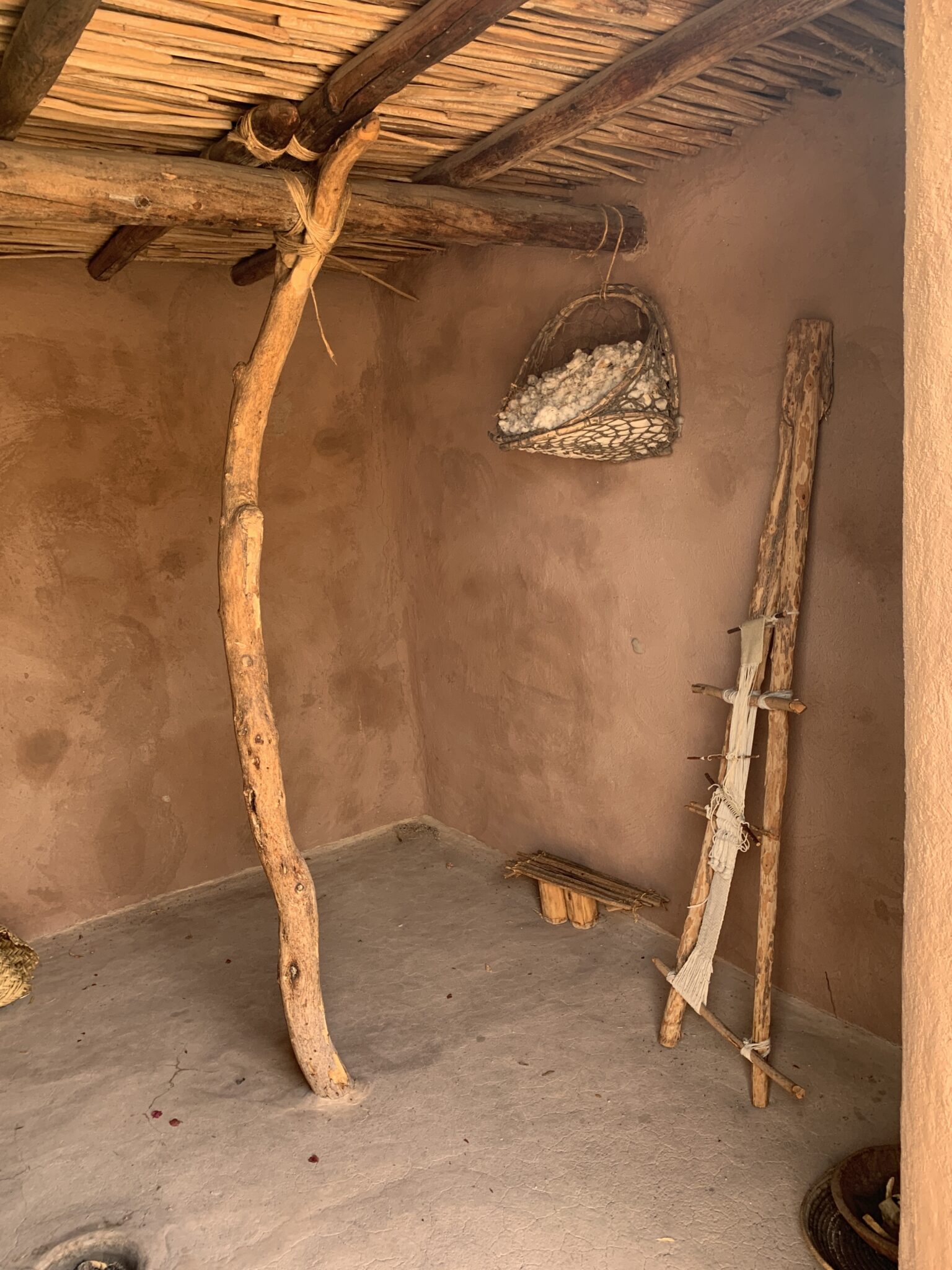
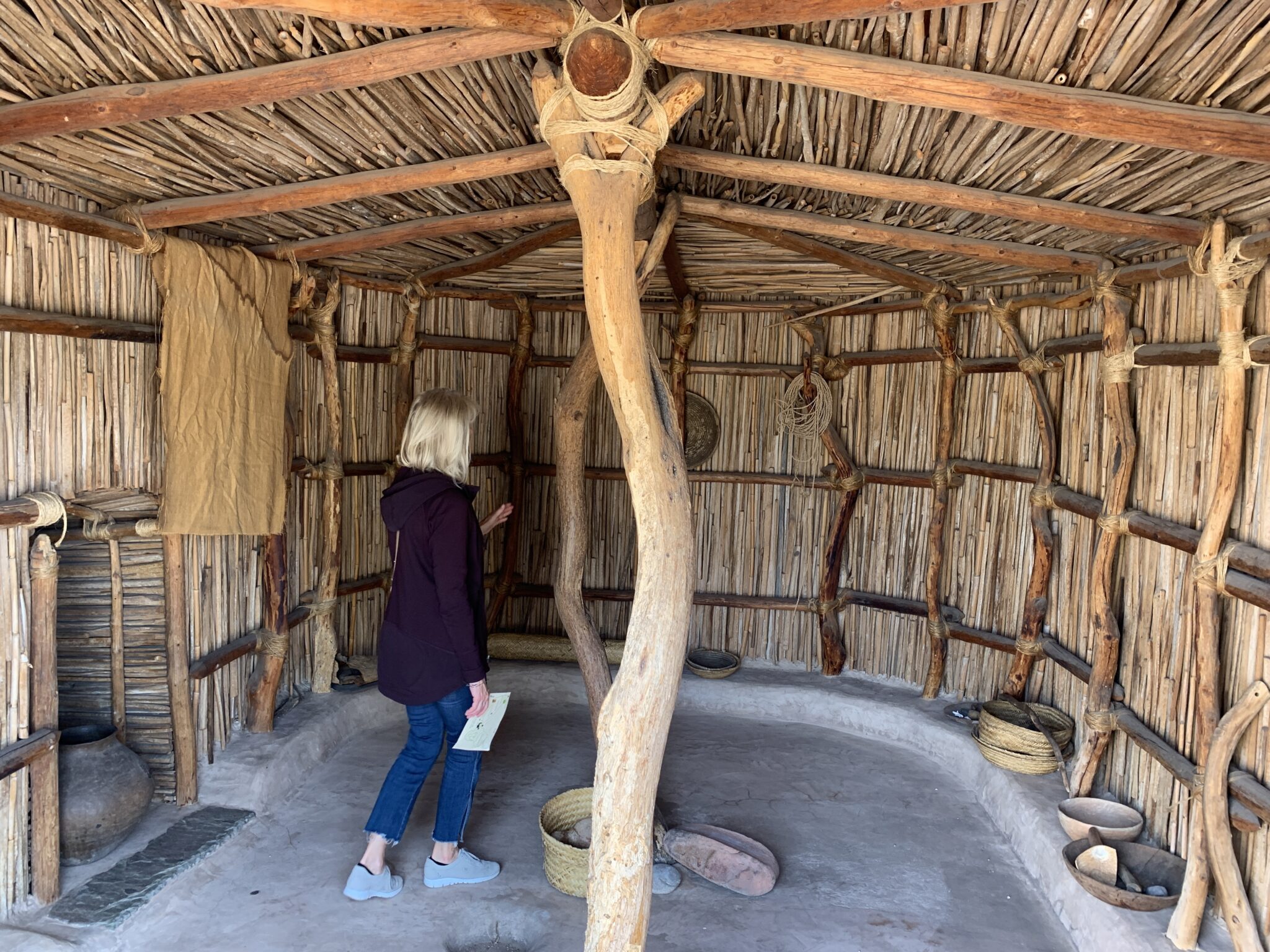
Maybe because I was thinking of the Aztecs, I expected to see a ball court. I was not disappointed. The sport fell out of favor long before the O’Odham vanished. Small wonder I say, as the “ball” was a round rock about the size of a tennis ball. Fancy getting beaned by that?

This is a modern interpretation of a wind break used to protect a cooking area. The verticals are Ocotillo branches.
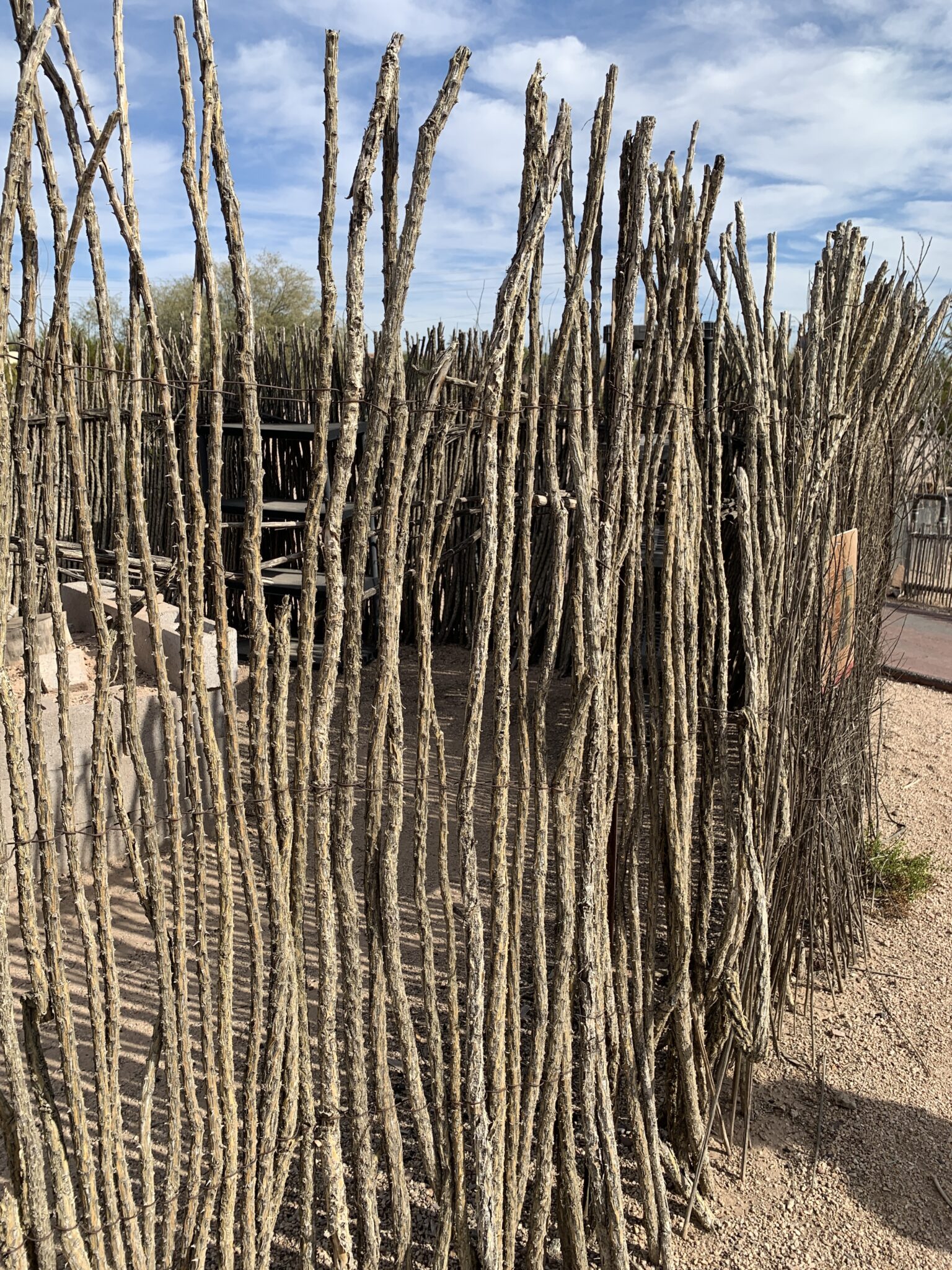
The Ocotillo, or “dead stick tree” as my sister-in-law calls it.

On the way out, I spotted this healthy example of chain fruit cholla.
